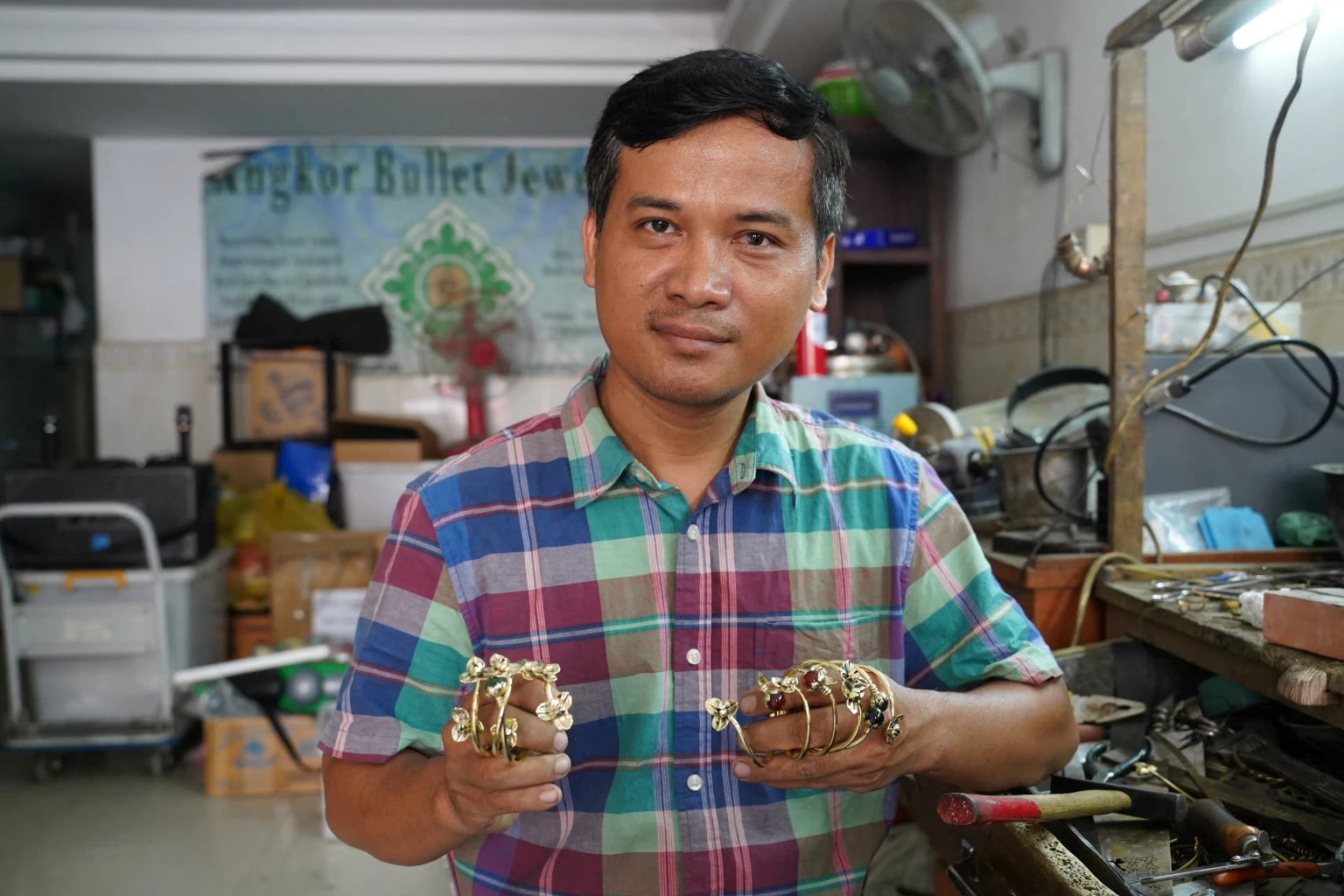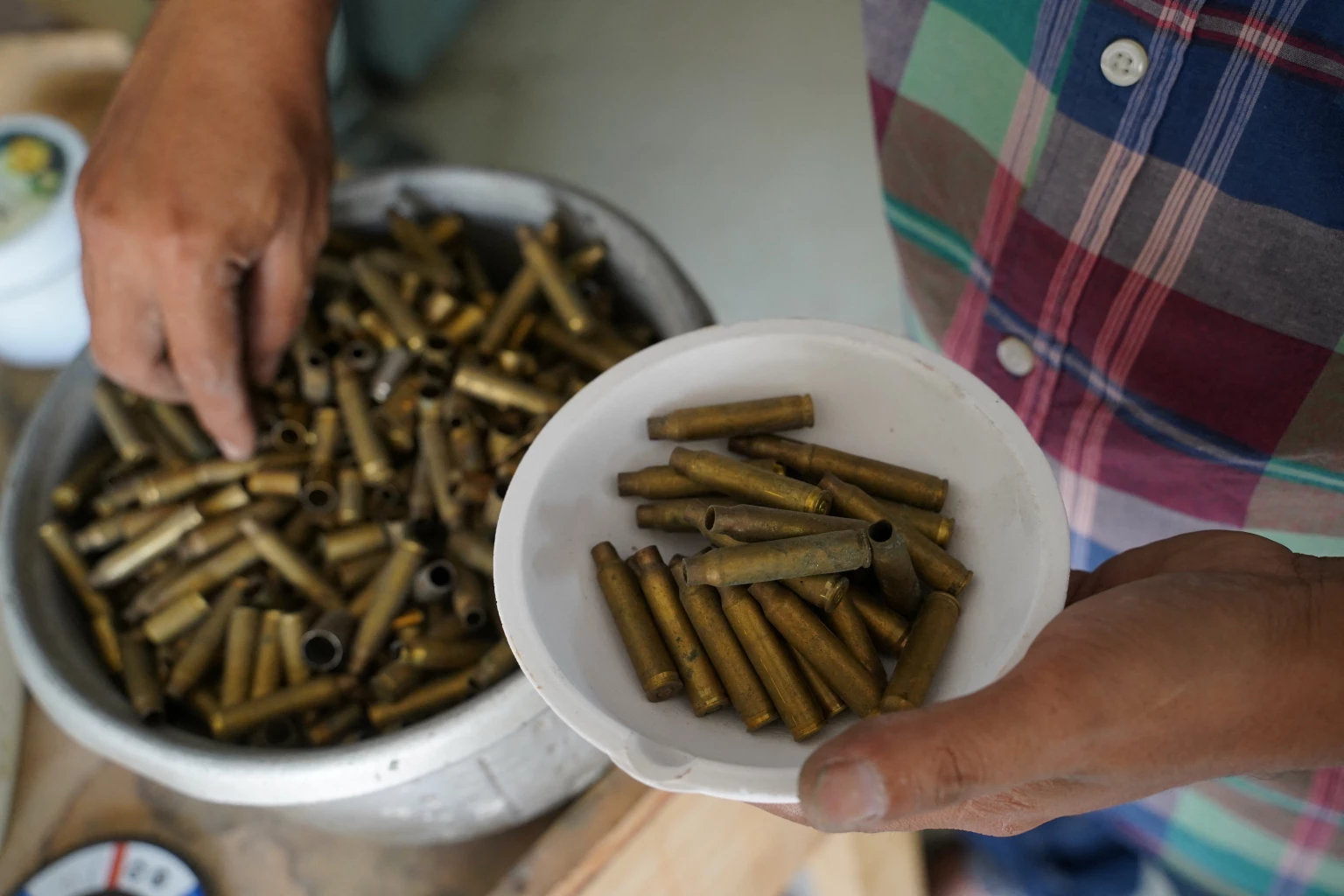March 31, 2023
BANGKOK – Upcycling something which is used in war into something beautiful and peaceful is a commitment Chantha made for himself in memory of his father who died during the ultra-Maoist Khmer Rouge regime between 1975-1979 and the civil war that continued on for another two decades.
“I am a victim of the war as a Cambodian who lost family members from it and now the world is at war too,” he told Reuters. “I make this to show that the world doesn’t want war, separation and we all want peace. Secondly, it helps create jobs in the community.”
The bullets of mainly AK-47 and M-16s are collected from the shooting range around town as well as from various military training grounds. The casing deemed safe for use is melted and poured into moulds and Chantha and his staff shape the metal into bracelets, earrings and rings.

His signature design is that of the Rumduol flower. The fragrant bloom is a symbol of Cambodian culture.
His workshop goes through an average of five kilograms of bullet casings per week and produces around 20 items per day of what is known as Angkor Bullet jewellery.
“During the war, we had to run away from bullets and we were in fear all the time. We didn’t know when we might die. I turn these bullet shells into jewellery to say that I don’t want the terrible situation to return. I want this jewellery made from bullet shells to be a symbol of peace. We remembered what we have lost and we don’t want it to happen again,” he says.
In 1992, after his mother had passed away, Chantha lived in an orphanage in western Pursat province. There, he received Khmer and English language lessons along with other vocational skills training. He fell in love with goldsmithing.


Chantha then moved to Phnom Penh and worked in a jewellery workshop where the owner was collecting artillery shells as keepsakes. Since gold was expensive, Chantha started turning bullet casings into shiny gold-coloured items and sold them next to gold jewellery at a cheaper price. They were a hit.
His creations have had some traction from overseas and he exports some of his work, but he mostly sells his creations at local fleas and other markets. The pieces cost between 5-20 USD, depending on the design and work involved.
“I like the rings and the bracelets because it is all handmade. It is quite unique,” said Yen Chenda a customer who recently visited his stall at a local market.
“We can also wear from this generation to the next,” she said.


